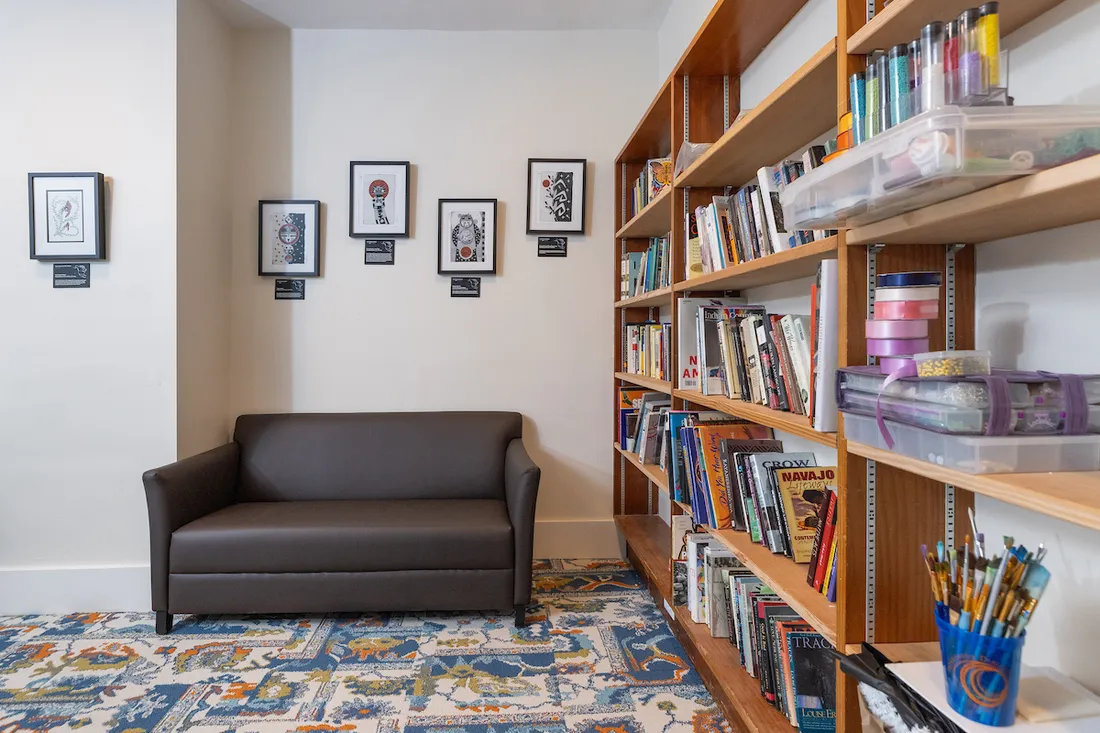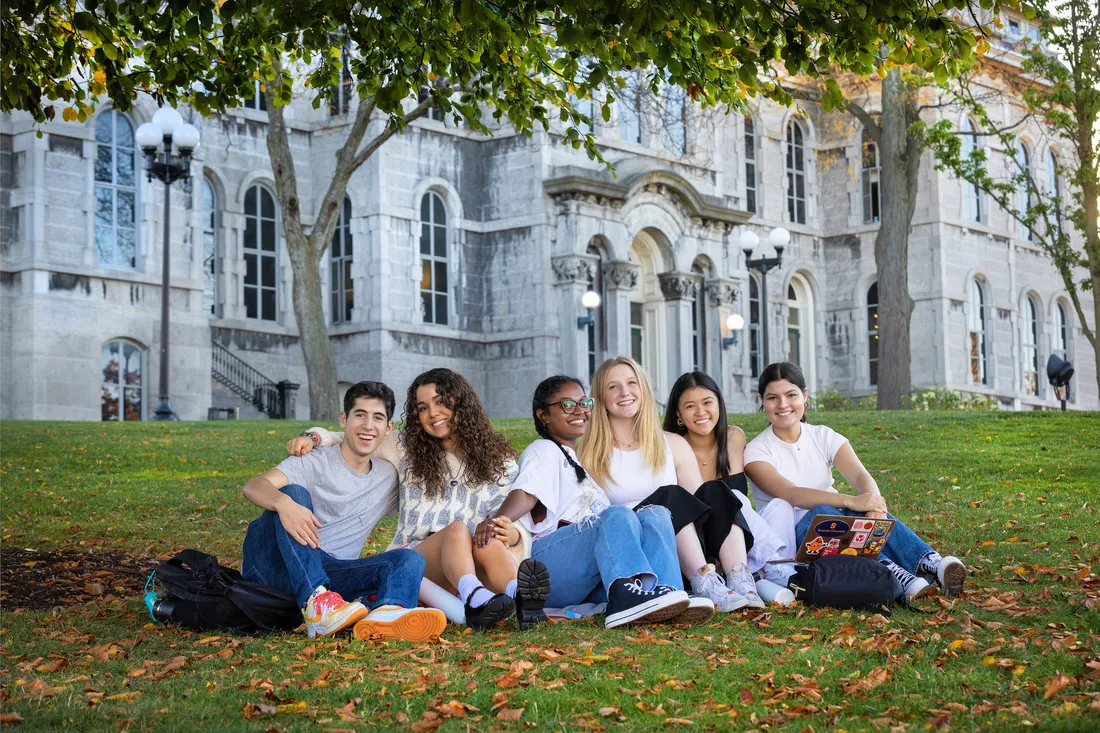Like many incoming students, Michael Benedict ’25 was anxious about going away to college. “I didn’t know what to expect from Syracuse University, which has a population bigger than my reservation’s,” admits the Akwesasne native, who hails from a Mohawk Nation territory on the United States-Canada border.
Today, he’s thriving at Syracuse, thanks in part to the Haudenosaunee Promise Scholarship. The program has helped students like Benedict, a certified citizen of a historic Haudenosaunee nation, for two decades. He’s grateful to be able to focus on his studies—a bachelor’s degree in history—without worrying about the cost of tuition, housing, food and mandatory fees.
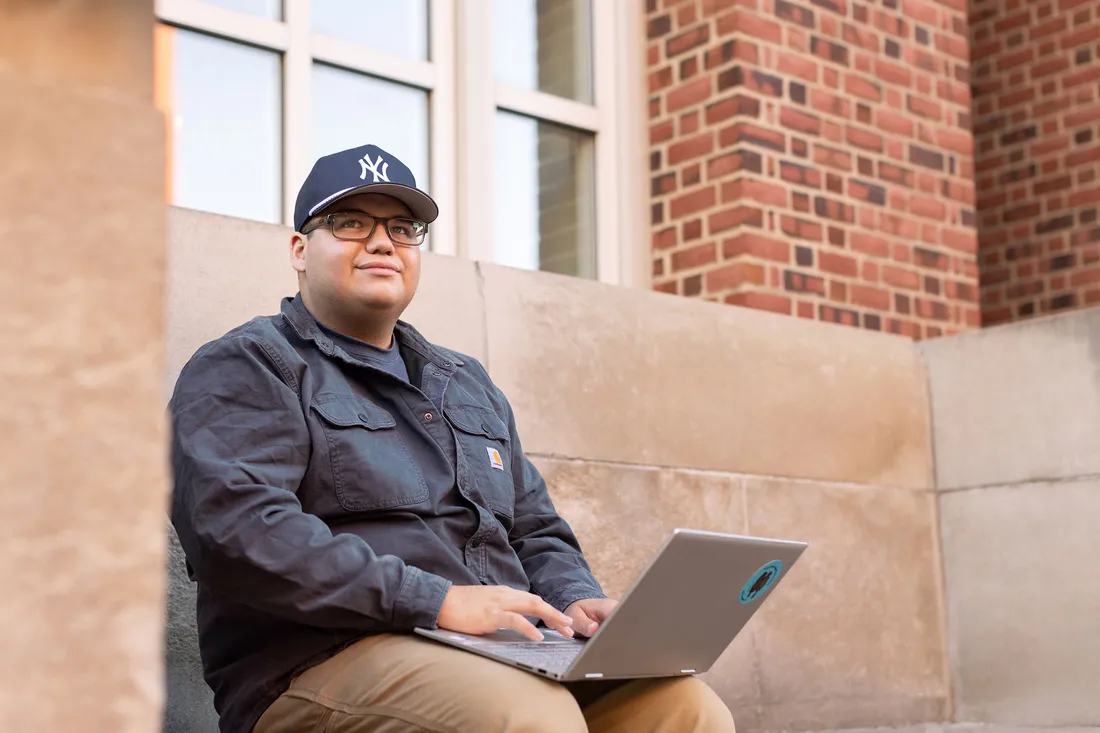
An aspiring teacher, Michael Benedict '25 studies the relationship between Native Americans and white colonial settlers.
And with relatives in nearby Onondaga Nation, Benedict has a familial support system. “Syracuse is like home away from home,” says the vice president of Indigenous Students at Syracuse (ISAS), which along with the Native Student Program, is housed in the newly renovated 113 Euclid Ave. building. “I can call or text a family member, and they’re here in minutes.”
One of multiple scholarships and grants for Syracuse Indigenous students, the Promise Scholarship enables Benedict to study the relationship between his ancestors and white colonial settlers. He hopes to parlay such knowledge into a career in high school or college teaching.
Rounding out his education is a minor in Native American and Indigenous studies (NAIS). Offered by the College of Arts and Sciences, the program surveys the social, political, historical and cultural landscape of Native American and Indigenous peoples.
NAIS appealed to Benedit for several reasons, not the least of which was that director Scott Manning Stevens is a fellow Akwesasne Mohawk. Stevens also is a multifaceted scholar with additional affiliations in English, religion and art and music histories.
“We cover about 11,000 years of history,” says Stevens of NAIS’ distinctive curriculum. “Because Syracuse is in the heart of Haudenosaunee territory, our students can study and engage in cross-cultural dialogue about issues of vital concern. They won’t find this at too many other places.”
Embracing Universal Values
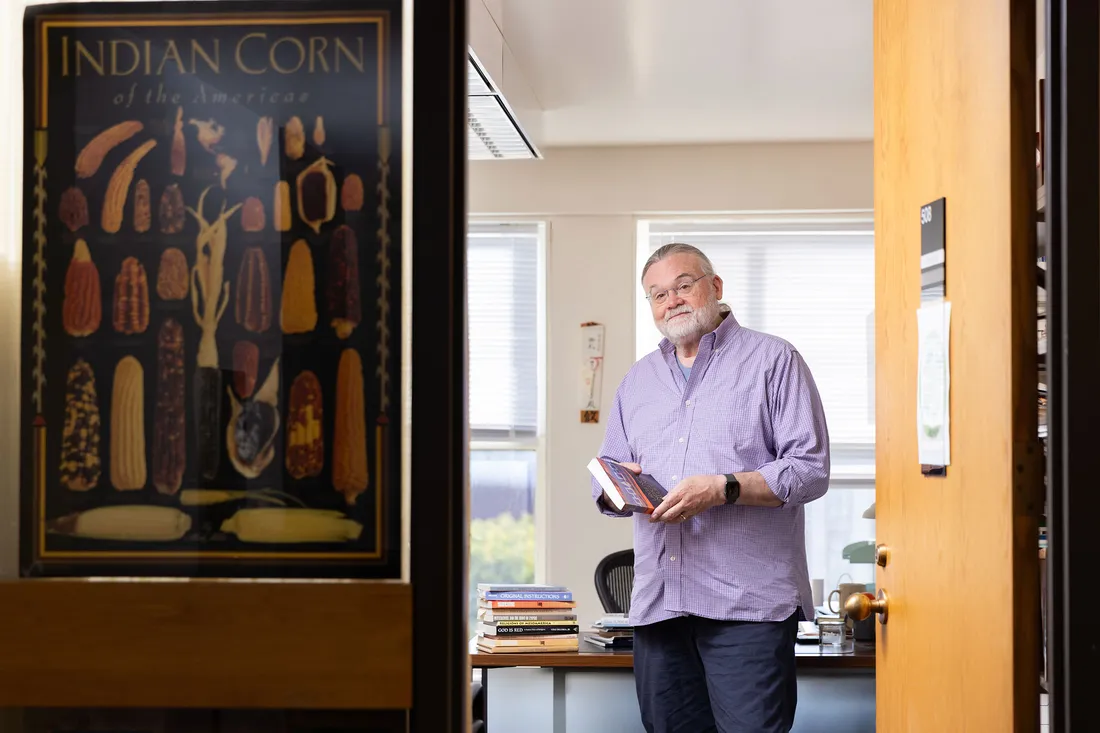
“Syracuse University recognizes the needs and concerns of different nations, beginning with what they call themselves,” says Philip Arnold, professor of religion as well as Native American and Indigenous studies (NAIS).
While the teaching of Native American history is decades old, the push to tell a more accurate and holistic account is recent. Up-to-the-minute findings by biologists, archeologists, anthropologists and historians, combined with new Indigenous voices and perspectives, are challenging the long-held Eurocentric narrative.
Philip Arnold, professor of NAIS and religion, is excited to see students like Benedict reclaim their past while “developing their intellectual gifts and integrating themselves” into today’s interconnected, technological society.
“Syracuse recognizes the needs and concerns of different nations, beginning with what they call themselves,” says Arnold, drawing comparisons between Haudenosaunee, an endonym for “People of the Longhouse” and Iroquois, a term of colonial origin.
For this reason, NAIS and the Certificate in Iroquois Linguistics (offered by the College of Professional Studies) investigate notions of identity. Basic terms like “Native American” and “Indigenous”—referring respectively to the original, self-governing inhabitants of the United States and other countries—undergo rigorous deconstruction.
“‘Indigenous’ refers to universal values, like respect, reciprocity, relationship and responsibility,” says Benedict, noting that some NAIS professors are from Peru, Japan and New Zealand. “It’s not just about people; ‘Indigenous’ is also a mindset.”
Working across traditional boundaries and alongside Indigenous communities enables NAIS students to contextualize the past and present as well as effect positive change. Among the issues they study are political sovereignty, cultural heritage preservation, language revitalization and climate change.
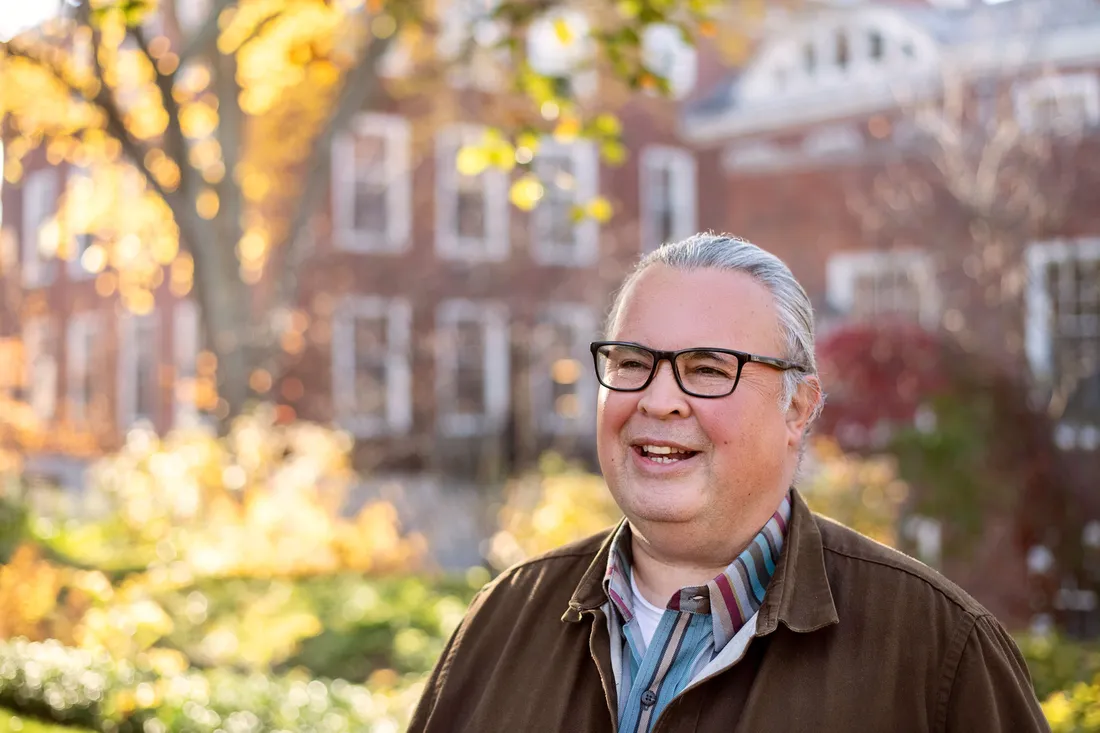
Associate Professor Scott Manning Stevens oversees both NAIS and the Center for Global Indigenous Cultures and Environmental Justice. “Programs like ours paint a more complete picture of Native American and Indigenous scholarship,” he says.
Much of this work takes place in the Center for Global Indigenous Cultures and Environmental Justice (CGIC), which is based in Arts and Sciences and is run by Stevens; the nearby Skä•noñh—Great Law of Peace Center, where Arnold has served as founding director; and the Center for Native Peoples and the Environment at the SUNY College of Environmental Science and Forestry, led by founding director Robin Wall Kimmerer, who also is affiliated with Arts and Sciences.
Meanwhile, Syracuse University Libraries provides a formidable collection of centuries-old, Indigenous-related books, articles, essays and government documents.
Augmenting the holdings are an interactive web-based tool exploring Haudenosaunee dispossession, Sound Beat podcasts about Indigenous issues, and Syracuse University Press’ acclaimed Haudenosaunee and Indigenous Worlds series.
“The University reflects what’s happening in the academy,” Stevens observes. “Programs like ours draw on diverse perspectives, community engagement and tribal sovereignty to paint a more complete picture of Native American and Indigenous scholarship.”
Engendering Hope and Possibility
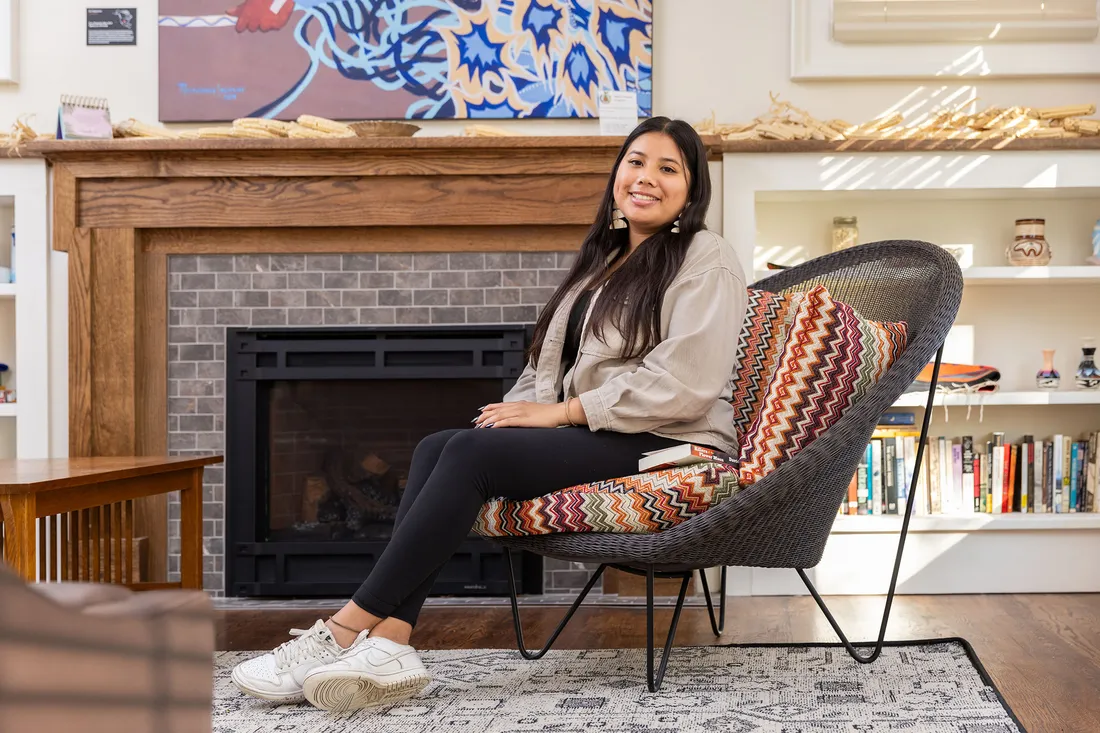
Ella Hill ’26 is an aspiring entrepreneur who wants to give others a “sense of hope for the future.”
NAIS excels in the arts, humanities and social sciences. Witness the $1.5 million grant award from The Andrew W. Mellon Foundation supporting NAIS’ establishment of CGIC and appointments of postdoctoral fellows Margaux L. Kristjansson and Pamela R. Spalding—scholars of Indigenous cultures and environmental justice, respectively.
Other recent successes include a major grant from the Henry Luce Foundation underwriting Arnold’s research into the Doctrine of Christian Discovery; the establishment of the Listen to the Elders speaker series; and the appointment of Spanish artist and Fulbright Scholar Paloma Polo.
But Indigenous faculty members like Kimmerer (a plant ecologist), Melissa Chipman (a paleoecologist) and Chie Sakakibara (a cultural geographer) suggest NAIS is widening its scholarly lens. For instance, Stevens is developing a certificate of Indigenous cultural competencies for museum and arts professionals.
To be an ally is to advocate on our behalf and to treat us the way we would you—with trust, honor and respect.
Ella Hill ’26
Ella Hill ’26, a junior majoring in management, is proud of her NAIS minor. “I want to open my own business and give back to the community,” says the Tonawanda Seneca native. “Being part of this degree program enables me to be a role model, to give our children a sense of hope for the future.”
An Indigenous peer mentor and ISAS treasurer, Hill credits the University for fostering a diverse and inclusive atmosphere. “The Native Student Program [which is part of Syracuse’s Intercultural Collective] creates a sense of belonging on campus.”

Located in the heart of Haudenosaunee territory, Syracuse enables students—Indigenous and non-Indigenous alike—to study and engage in cross-cultural dialogue about important issues.
Other culturally affirming experiences include the Indigenous Living Learning Community, the Three Sisters Sovereignty Garden Planting program, and campuswide observances of Indigenous Peoples Day and Native American History Month.
“It’s essential to learn our history and culture and to understand the significance of our own sovereignty,” Hill continues. “To be an ally is to advocate on our behalf and to treat us the way we would you—with trust, honor and respect.”


